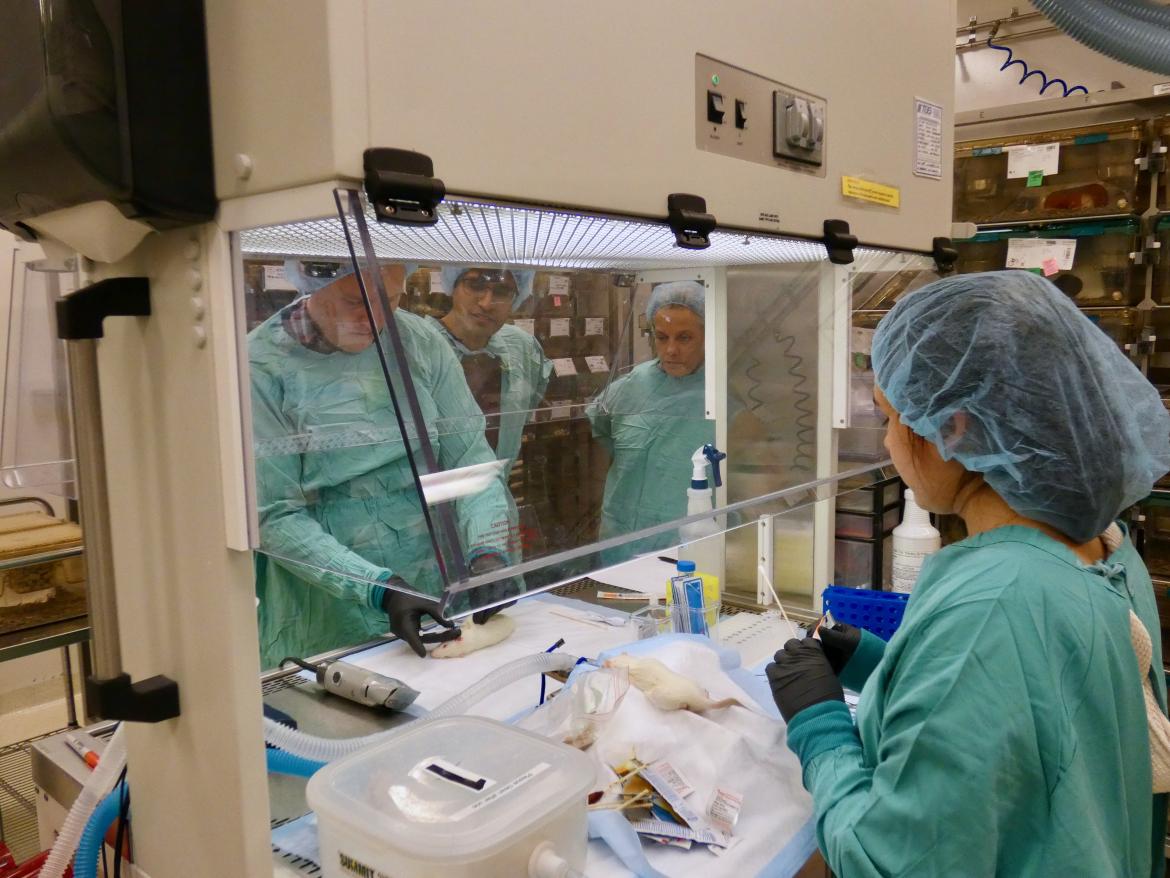Assessing the role of HDACs in the regulation of the estrogen receptor (ER)-signaling and resistance to anti-estrogen therapy
Despite many recent advances in the treatment and prevention of breast cancer, 194,280 women were expected to present with the disease in the United States in 2009, resulting in over 40,000 breast cancer deaths per year. More than two-thirds of these women will present with tumors that express estrogen (ER) receptors and will be candidates for hormonal therapy. The fact that ER-positive tumors are frequently less sensitive to chemotherapy further reduces treatment options. Thus, novel approaches to reverse hormone therapy resistance are clearly needed.
Preclinical data from several laboratories including ours showed that treatment of ER+ breast cancer cells with histone deacetylase inhibitors (HDACi) leads to down-regulation of the ER, reversal of tamoxifen-induced ER stabilization with induction of pro-apoptotic genes and an increase in cell death at clinical feasible concentrations (Bicaku, et al. Cancer Res, 2008; Thomas, et al. Breast Cancer Res Treat, 2011; Thomas S, et al. PLoS One, 2013; Thurn KT et al. Mol Cancer Ther, 2013). Modulation of ER signaling by HDACi may therefore represent an alternate strategy to reverse hormone therapy resistance in advanced breast cancer. Our lab is focused on identifying the relevant target HDACs in order to improve the therapeutic window when using an HDACi as an adjunct to hormonal therapy.
Evaluation of HDAC expression to predict response to anti-estrogen therapy
There are several clinical trials that test different HDACi for the treatment of cancer. Many more compounds are under development with the goal in finding more specific and selective HDACi. Yet, to date there are no established pharmacodynamic markers for rapid and target specific drug evaluation. Furthermore no response predictors are available to optimize patient selection or guide the selection of the optimal HDACi. This demonstrates the need to develop clinically applicable pharmacodynamic markers and biomarkers of response when using HDACi to reverse hormone therapy resistance in breast cancer. Our lab is interested in establishing predictive markers and defining the optimal clinical setting for such therapy (Munster et al. Clin Cancer Res, 2009; Munster, et al. Br J Cancer, 2009).
A pilot trial with 43 patients performed by our group has shown promising activity for vorinostat combined with tamoxifen in 40% of patients with ER+ tumors who had demonstrated progression on prior hormonal and chemotherapy (19% response and 21% stable disease for >6 months) (Munster, et al. Br J Cancer, 2011). However, correlative studies accompanying this clinical trial suggested that a significant change in histone acetylation (the pharmacological marker of HDACi) was only seen in 58% of the treated patients. Histone acetylation was further correlated with HDAC2 expression in peripheral blood mononuclear cells (PBMC). Interestingly, vorinostat caused meaningful pharmacodynamic effects only in a subset of patients measured in a surrogate tissue (PBMCs), and such responses were more likely in those patients where histone acetylation was induced. In addition, the induction of histone acetylation was associated with higher baseline level of HDAC2 expression in PBMCs. Hence, the prospective use of biomarkers may allow enrollment of patients on clinical trials with a higher likelihood of response. We are interested in evaluating HDAC expression in patient tumor samples to determine whether expression profiles predict molecular or clinical response in patients receiving HDACi and hormonal therapy and to expand the data on HDAC expression in PBMCs for correlation between the surrogate tissue and tumors.
Developing silastic tubing for local delivery of hormonal therapy to the breast

Breast cancer remains a considerable public health burden. Current use of systemic use of anti-estrogens is associated with undesirable side effects and poor bioavailability in young women. Surgical removal of the breasts is unacceptable to most women, even for those known to be at high risk for breast cancer. As such, many high risk women opt for neither measure, thus highlighting the need for prevention alternatives.
Our preliminary data suggest that silastic tubing is capable of acting as a fulvestrant depot and could be used to deliver fulvestrant selectively to the breast tissue. Our goal is to characterize fulvestrant release in in vitro and in vivo models and compare fulvestrant uptake by mammary tissue vs blood in the mouse. Our study will provide the scientific basis for translating this novel breast cancer preventive approach to the clinic.
Epigenetic-Immune priming for reversing hormone therapy resistance in metastatic breast cancer
Hormone sensitive metastatic breast cancer remains a therapeutic challenge and resistance develops in almost all patients. An exciting recent discovery has been the introduction of immunotherapy to cancer treatment. Cancer cells, instead of being eradicated by immune surveillance, shield themselves from elimination by the immune system. The programmed death receptor (PD-1) and its ligand (PD-L1) are culprits in immune-escape and the inhibition has been a major breakthrough. PD-1 is expressed on the cell surface of activated T-cells and other immune cells and down-modulates unwanted or excessive immune responses when engaged with its ligand. PD-1 ligands are constitutively expressed or can be induced in cancers. In breast cancer, PD-L1 expression is a poor predictor of survival and PD-L1 expression has been found to increase as ER+ tumors become resistant to therapy.
Our lab seeks to understand whether HDAC inhibition can prime the immune response by modulating the PD-1 and PD-L1 in expression in breast cancer and surrounding stroma. We plan to test the hypothesis that HDAC inhibitors can differentially regulate T-cells and myeloid subtypes.




